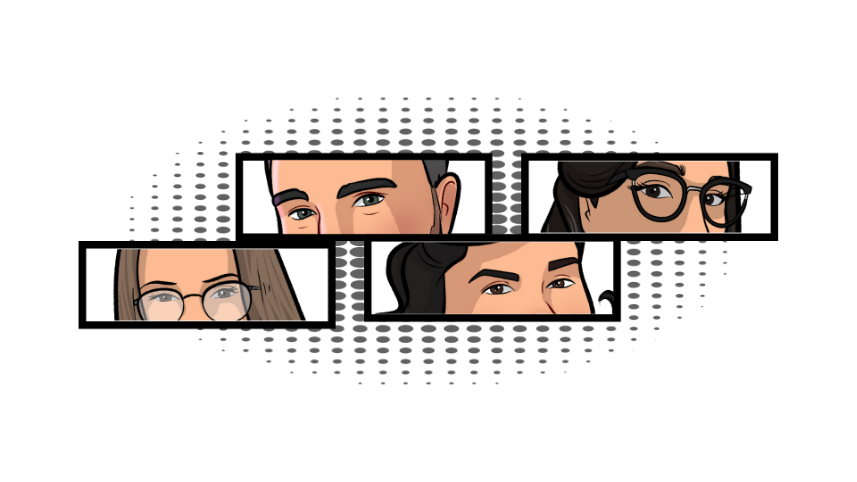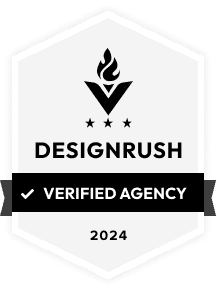When building an online business from scratch, it isn’t as simple as designing the perfect website. Although that goes a long way, there is a lot of behind the scene action you may not be aware of. In this article, we have put together a list of some of the most important marketing tools and tips, explaining what they all mean in more detail, and how they can help your business grow.
ATL (Above-the-Line-Marketing)
Marketing can be divided into three categories. These include Above the Line (ATL), Through the Line (TTL), and Below the Line (BTL)
When it comes to marketing, advertising can be differentiated based on marketing motives, groups you wish to target and budget.
ATL is a marketing strategy that helps build your business’s brand. Mainly untargeted, meaning any communication isn’t directed to a particular group. Here are some examples of ATL marketing:
Television
Most people watch hours’ worth of TV each day. Adverts are a great way of marketing a product or service, from a local to an international audience. Audio and moving images will catch the attention of the viewer.
Radio
Have you ever got a radio advert stuck in your head? It might be a catchy theme tune or a quote you hear. It only takes hearing an advert a few times before it starts to penetrate. Radio is a great way to get any message across.
Print via Magazines and Newspapers
Print via Magazines and Newspapers has a much wider reach than most other mediums. You have the option of booking in a slot to advertise your product on a regular basis or a one-off ad.
Outdoor Advertising
Billboards, Flags and Banners are a great way to advertise your product to the general public, depending on the location.
Advantages of Above the Line Marketing
- Wider Reach
- Connect better with your target audience
- Brand Building
BTL (Below-the-Line-Marketing)
Below Line Marketing is a way of direct advertising towards a target group of potential customers. BTL focuses more on conversions other than brand building. Some of the examples are as follows:
Direct Marketing
Direct Marketing is more of a personal approach, allowing you to send direct emails, texts and messages. If planned properly, BTL can result in more conversions.
Sponsorship
When starting a new business venture, gaining sponsorship is important. Gaining trust with other corporates or events will get you more impressions.
Brand Activation
Brand Activation comes down to trust! The main aim is to get your customers to act based on experience and long-term connections.
Advantages of Below The Line Marketing
- Conversions are far better
- Better ROI
- Easy to control
- Tailor-Made
TTL (Through-The-Line)
TTL is a mixture of using both ATL and BTL marketing strategies, leading to better results. To break it down, the marketing involves campaigns that include both ATL and BTL for brand building as well as conversions.
Examples of Through The Line Promotion
360-degree Marketing
Integrate both ATL and BTL strategies for maximum benefits.
Digital Marketing
A digital marketing strategy that offers ATL marketing benefits yet acts as a BTL in the way of communication with the customer. This form of advertising is cookie-based. The result is better ROI, and most consumers prefer this strategy.
Backlinks
Backlinks are essential for your website if you wish to drive traffic to your site using search engines such as Google. An example of how this is achieved is when a user clicks on a link from one website, linking them to your site. The more backlinks you get, the higher you will rank on search engines.
There are several ways to gain backlinks:
- Use free Internet Directories – Before search engines, the Internet had directories that people would browse through when looking for a particular website. These directories are still available to this day and continue to accept new links.
- Link Exchanges – Two websites linking to each other.
- Article Directories – Writing blogs and articles, including internal links to your website.
- Link Bait – Link Bait includes pages or articles on your website that are intended to attract backlinks from other websites. The articles can include controversial topics, tools and resources to name a few. Although the results are rewarding, link-building can be one of the most difficult to achieve.
Branded / Non-Branded Search
A branded keyword is a query that is searched for via a search engine that includes the name of your company, brand or business. For example, ‘greyzip’.
A non-branded search is when the search term doesn’t include your name. For example, ‘Web Developer in Colchester’.
CAC (Customer Acquisition Cost)
Customer Acquisition Cost is the total amount of money spent on acquiring new customers. It includes the amount spent on advertising, marketing costs, sales representatives etc, and then divided by the number of customers you have acquired as a result.
For example, if you spent £100 on marketing for one year, and you received 100 new customers, the CAC would be £1.00
CPC (Cost Per Click)
Cost per Click is the price you would pay each time somebody clicks on one of your PPC adverts on platforms such as Google Adwords or Bing Ads.
Your results are determined based on a few factors. These include your maximum bid, quality score and how your competitors are ranking for the same keyword.
CPM (Cost Per Mile)
Also known as cost per thousand, CPM is a term used when you donate the price of 1,000 advert impressions on a web page. For example, if a publisher was to charge £2.00 CPM, an advertiser will have to pay £2.00 for every 1,000 impressions they receive.
CTR (Click-Through Rate)
CTR measures the amount of clicks you receive on an ad per number of impressions. To improve your PPC success, achieving a high click-through rate is important for your quality score and the amount you spend every time somebody clicks on your search ad.
DR (Domain Rating)
Domain Rating (DR) is a feature that shows the strength of your website’s backlinks on a scale of 1 to 100, with the latter being the strongest. To clarify, Domain Rating doesn’t have a direct effect on your page’s ranking on Google.
It is useful in respect of gauging a business’s link popularity.
A lot of companies will track fluctuations in their DR as often as possible, and if they notice a slight drop, can become anxious.
How is a Domain Rating Calculated?
A Domain rating is calculated in the following way:
- Check how many unique domains have at least 1 dofollow link to a target website.
- Taking into consideration the DR values of the linking domains.
- How many unique domains each of the websites link to.
- The use of math and coding to calculate ‘raw’ DR scores.
- Then decide on a score between 0-100
PPC (Pay Per Click)
You can have the best-looking website with engaging content, but if you don’t drive traffic to the site, all your hard work will be wasted. So, you need some kind of marketing strategy in place.
PPC (Pay Per Click), is one of the most effective ways to attract visitors to your site. PPC advertising is a form of online marketing where you create and place ads for your products or service. It is a way of paying for visits, rather than receiving views organically. When somebody clicks on the link, you will be charged a small fee.
When setting up your PPC, you will have the option of targeting a specific audience. For example, it can be based on age, gender or location.
PPC is one of the most cost-effective ways to market your business. You only pay when your ad has been clicked on. PPC has the potential of allowing your business to show at the top of the search results page.
ROAS (Return on Advertising Spend)
Return on Spend, more commonly known as ROAS, is a marketing metric that assesses the return and performance of a digital advertising strategy, advert or campaign, whilst testing the performance.
ROAS is calculated using a simple formula: ROAS = Revenue / Cost. Your companies ROAS can be determined by the following:
- Total revenue that is generated by your ad strategy
- Total cost of managing your ads
Once you have worked out the costs, divide your revenue by the total cost, and you have your ROAS.
SEM
SEM (Search Engine Marketing) is an effective way to grow your business. With the amount of competition on the internet, it is important your business advertises online as much as possible.
SEM is a way of marketing using paid advertisements that appear on search engines. An advertiser will bid on keywords that are being searched for on platforms such as Google and Bing.
One of SEM’s biggest strengths is it allows advertisers to place their ads in front of customers who are likely to make a purchase.
SERP (Search Engine Results Pages)
SERP is the term used for when a person searches for something using specific keywords on Google or Bing, and then the search engine will present them with the results page.
Each SERP is unique, even if somebody else has searched the same keywords. This is because the search engine will consider certain factors, such as location and browsing history.
SERP usually contains two types of content, those being organic and paid results. Organic results are web pages that appear as a result of the search engines algorithm.
SOV – Share of Voice
Share of Voice is a measure of how your brand is marketed compared to your competitors. SOV usually refers to a brand’s share of paid advertising within an extremely competitive market. It can include certain elements such as digital marketing and advertising, as well as mentions on social media platforms and traffic for particular keywords.
How to Calculate Share of Voice
Calculating your Share of Voice used to be far more difficult, as spend needed to be estimated, and it was common to miss competitor’s adverts. With the latest avenues such as Social Media, SEO and PPC, there are far better ways to calculate SOV more precisely. There online tools available that can help.
SOV = Your Brand Advertising / Total Marketing Advertising
UGC – User Generated Content
User-Generated Content (UGC) is any type of content containing text, videos, reviews and images etc. Brands generally share UGC on social media sites, their website and various other marketing channels.
Instagram is one of the most common platforms for brands to share UGC. The user will create posts and share them to feature their brand and expose a product or service to their target audience.


